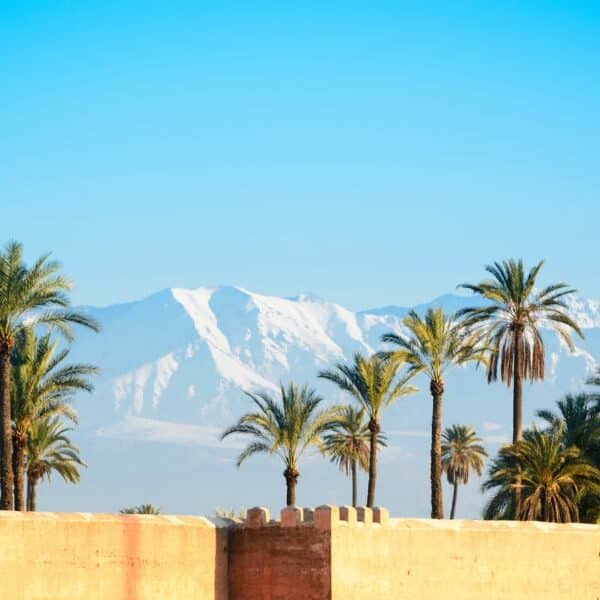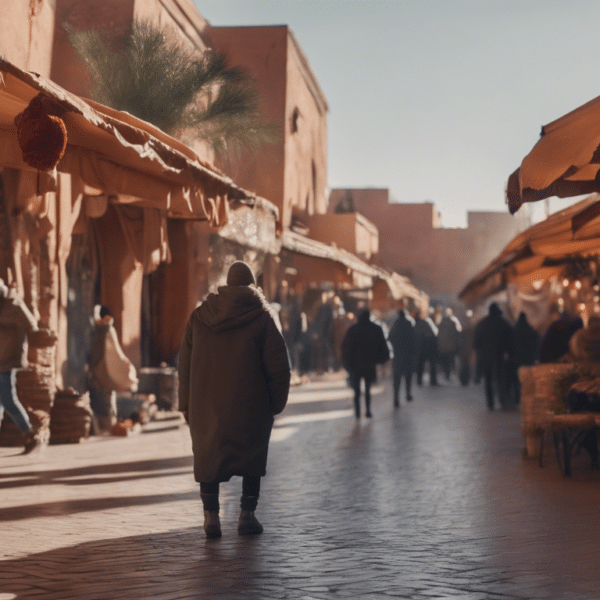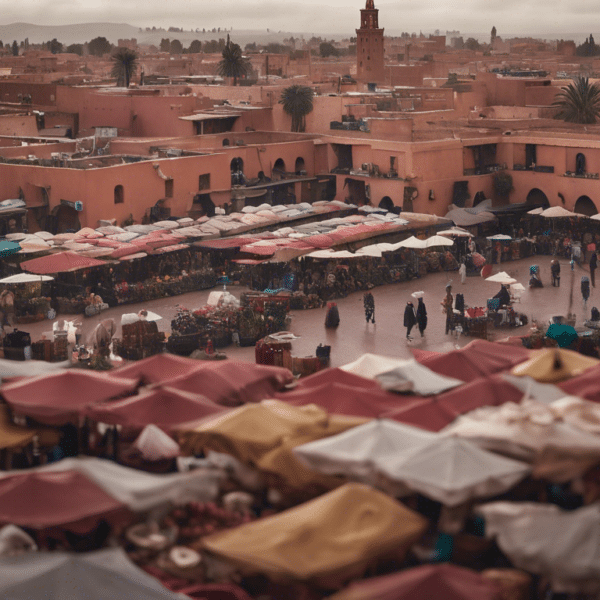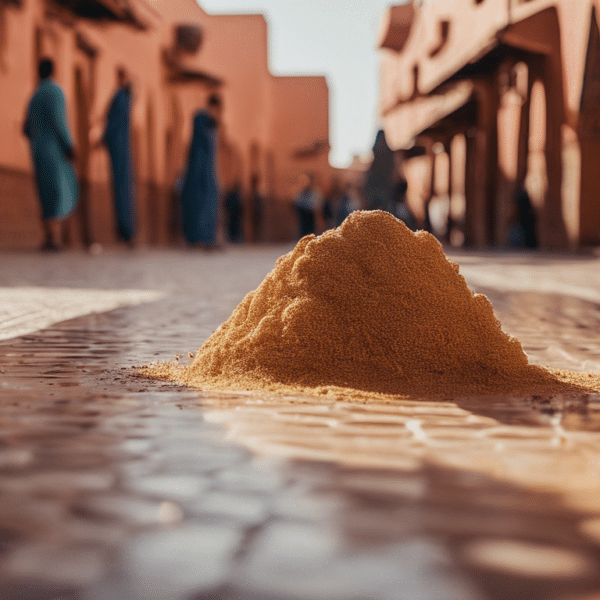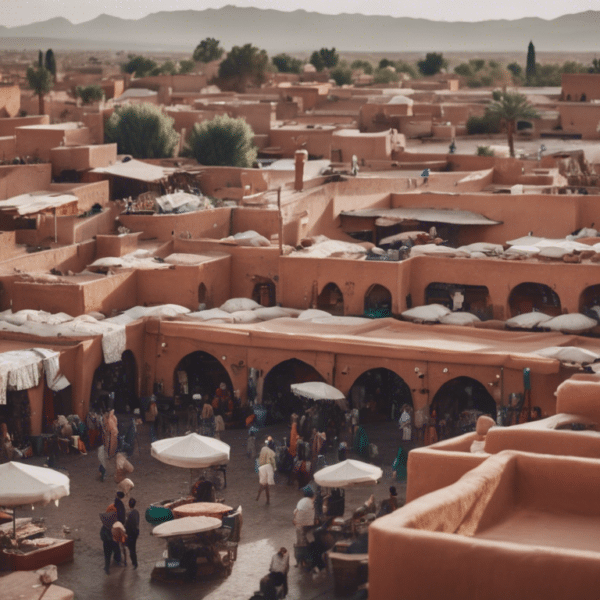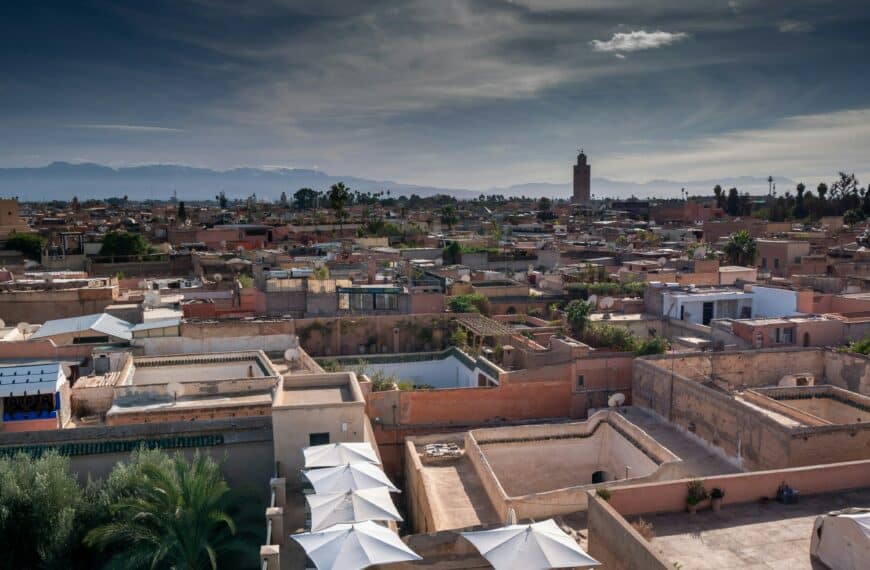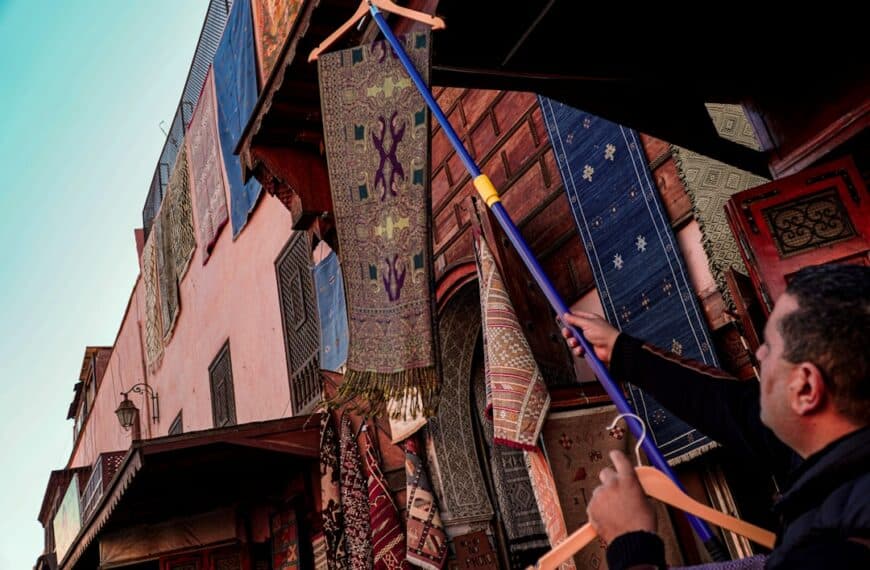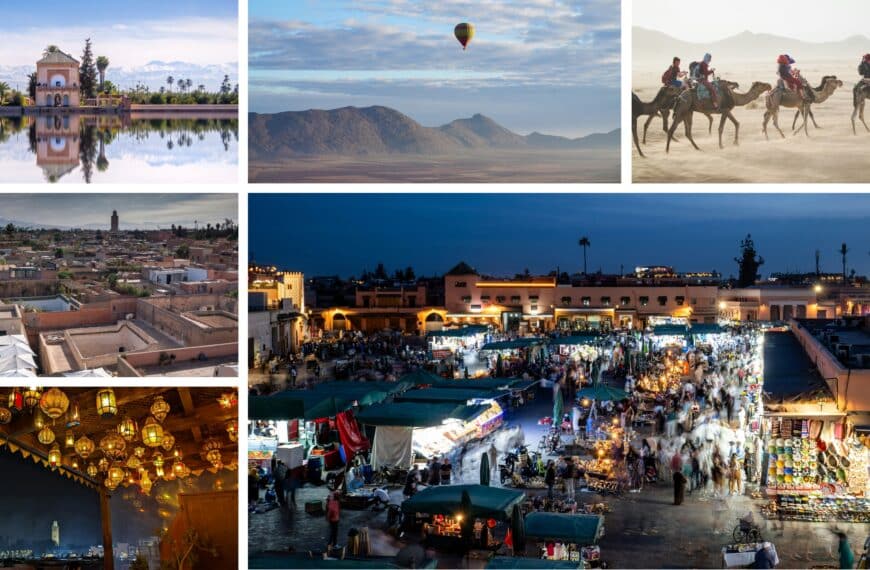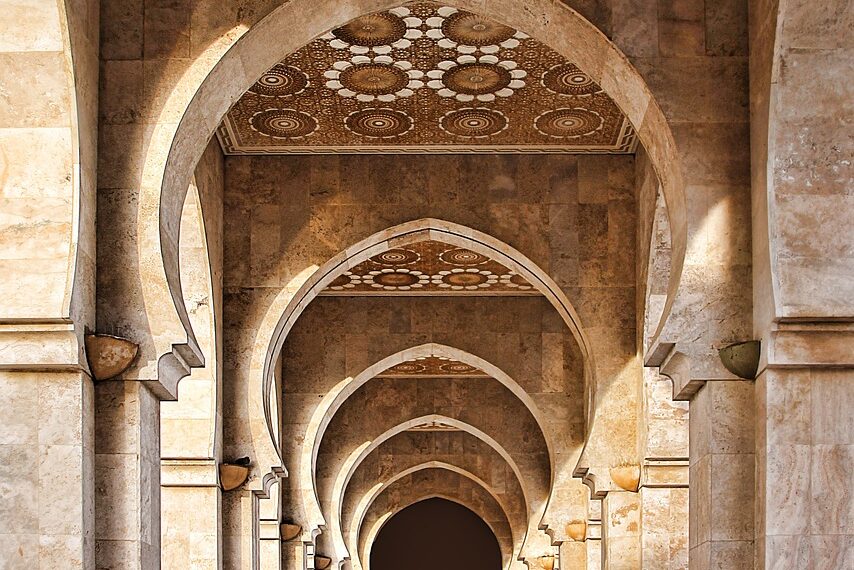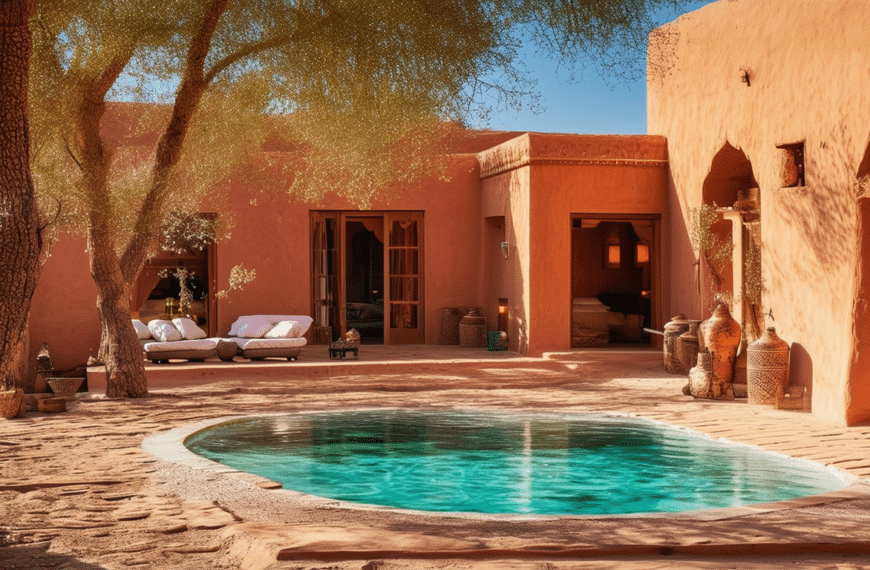Immerse yourself in the golden warmth of Marrakech this summer! Discover how the weather in June adds to the city’s distinctive charm, offering an atmosphere that’s both lively and serene. This article provides an insightful guide on Marrakech’s weather in June, helping you plan your holiday ahead and make the most of the city’s inexhaustible allure. From the gentle morning Sun to the dramatic evening skies, every moment in Marrakech is set to captivate your heart. Read on to unmask the nuances of this city’s June climate, and how you can turn up the heat on your travel experiences!
Understanding Marrakech’s Climate
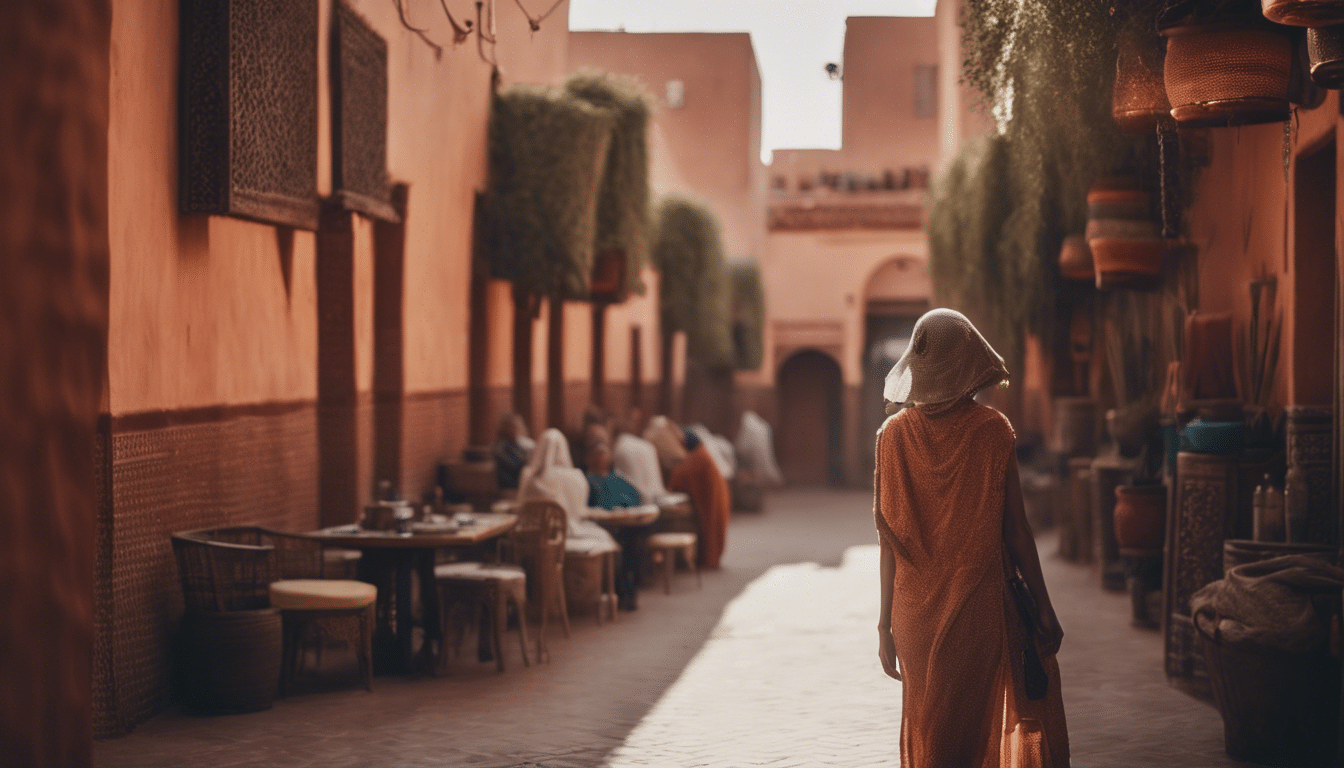
Embracing The Warmth: Marrakech’s Year-Round Climate
Marrakech, the remarkable “Ochre City,” embodies the real essence of Morocco, boasting a vibrant culture and a breathtaking natural panorama. A significant aspect of the city’s charm lies in its distinctive climate – a subtropical, hot desert climate that is characterized by high temperatures, minimal rainfall, and ample sunshine – perfect for avid explorers like our dear friend John and for anyone with a penchant for travel and a love for novel experiences.
The city entertains nearly 3,000 hours of sunlight per year – a compelling reason for travel lovers to visit Marrakech. Of course, understanding the climate is key to ensuring a fulfilling travel experience. Knowledge of the city’s climate patterns enables travellers to anticipate weather conditions, thereby planning their activities in a manner that aligns with the climate.
Weather Patterns Across Seasons: The Marrakech Climate Calendar
The weather in Marrakech fluctuates across different seasons, offering a diversity of experiences to its visitors. Here’s a snapshot of what one can expect in Marrakech’s climatic calendar:
– Spring (March to May): This is a delight for travellers as the daily temperate averages to a pleasant 20 to 25 degrees Celsius. However, these months also receive occasional rain showers – the city’s way of welcoming the Spring season.
– Summer (June to August): Summers can be scorching, with temperatures soaring as high as 40 degrees Celsius. Nevertheless, the city’s buildings, designed for such a climate, offer a refuge from the heat, making it a livable and fascinating period to visit.
– Autumn (September to November): Autumn brings a slight drop in temperatures, but Marrakech remains relatively warm, with daily temperatures around 25 to 30 degrees Celsius accompanied by scanty rainfall.
– Winter (December to February): Winter months can be comparatively colder, especially during the night. Day temperatures hover around 15 to 20 degrees Celsius with chilly nights, making winter clothing essential.
Peel the Layers: Understanding the Role of Weather in Marrakech’s Lifestyle
The climate in Marrakech has indeed influenced the lifestyle of its inhabitants and architecture. The city’s traditional construction caters to the hot desert climate. Houses, commonly known as riads, are built around a central courtyard, offering respite from the scorching summer heat. This wisdom incorporated within the city’s architecture strikes a harmony between the inhabitants and the local climatic conditions.
Moreover, the climate has blessed Marrakech with a rich variety of flora, such as olive trees, fig trees, and date palms, thereby being home to several endemic species that thrive in these weather conditions.
Pack Right: Travel Prepared For The Marrakech Climate
Understanding weather patterns is essential to packing the right gear for your visit to Marrakech. Here’s a quick guide:
– Spring and Autumn: Lightweight clothing is preferable. Don’t forget to carry an umbrella or a raincoat as occasional showers may surprise you.
– Summer: Protective sunwear like sunglasses, hats, and sunscreen are a must to shield you from the midday sun. Opt for loose-fitting and breathable clothing.
– Winter: During the day, warm clothing is not usually necessary. However, the nights can be quite cold, so it would be wise to carry some warm clothes.
Taking into account above insight, it is safe to say that understanding the weather and its yearly patterns is a vital step in preparing for an unforgettable journey to Marrakech.
Historic Weather Patterns in June
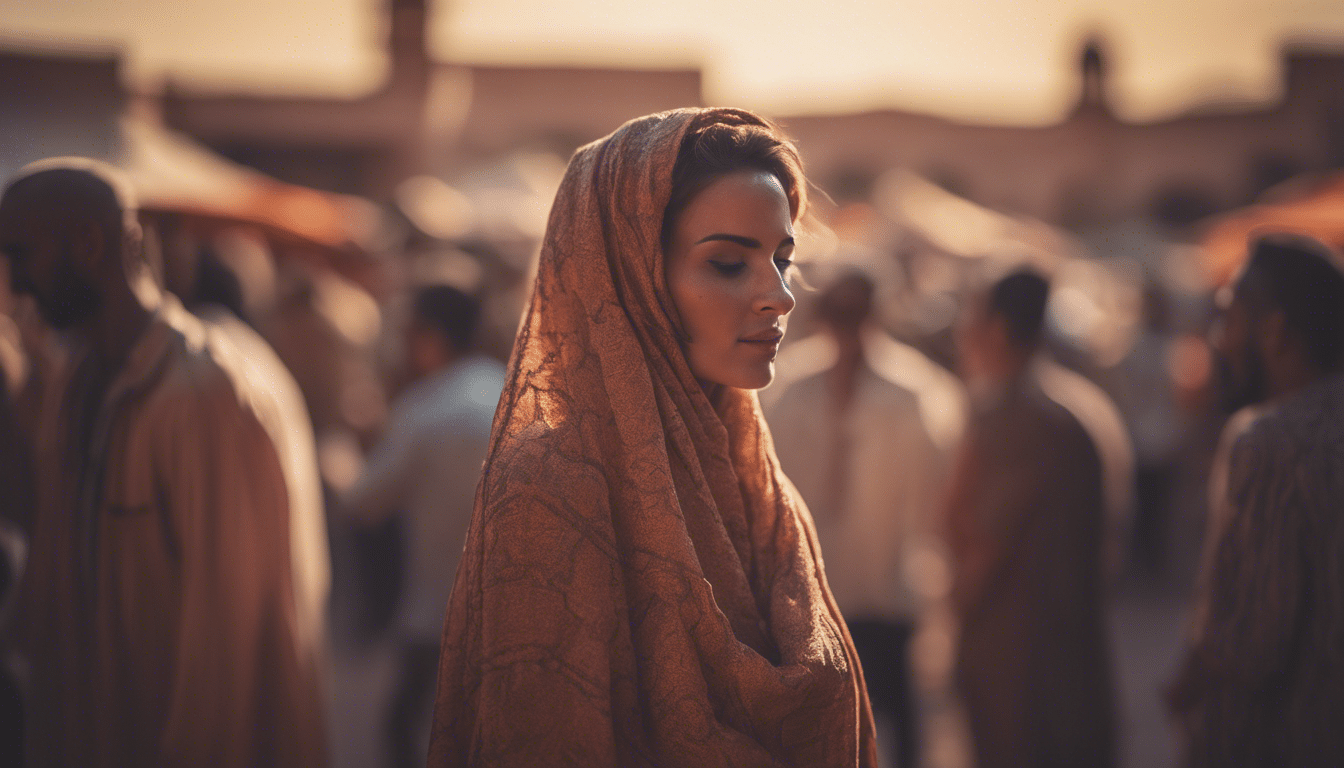
Unveiling the Mystery of Historic Weather Patterns in June
Weather is the tapestry upon which our lives are painted and understanding the historical patterns of this natural phenomenon can have a profound impact on our travel plans. In June, particularly, there are captivating historic weather patterns in various parts of the globe that can affect travel experiences.
In terms of historical records, June often marks a significant transition in climates. Let’s explore this fascinating topic together to give you insights into what you can expect during this month.
An Overview of Global Weather Patterns in June
Historically, June is characterized by a variety of weather conditions. This diversity is due mainly to the Earth’s axial tilt, causing seasonal changes depending upon the region.
In June, the Northern Hemisphere is tilted towards the sun, thus signalling the arrival of summer. Conversely, the Southern Hemisphere experiences winter as it is tilted away from the sun. This tilt is at the heart of the complex global weather patterns during this time of year.
Investigating June Weather: Case Studies of Remarkable Weather Patterns
Let’s shine a spotlight on some specific areas where historical weather data reveals remarkable patterns during June:
1. Marrakech, Morocco: With scorching daytime temperatures hovering around 35 degrees Celsius, June signals the start of summer in this part of the world. The historic weather patterns in Marrakech show minimal rainfall in June, allowing tourists to enjoy endless days of bright sunshine.
2. Sao Paulo, Brazil: Stepping into the Southern Hemisphere, June in Sao Paulo spells the onset of winter. The average temperature dips to about 15 degrees Celsius, and rainfall is significantly reduced, offering a cooler and drier climate.
Impact of Historic June Weather Patterns on Travel Plan
Understanding the historic weather patterns of June can help smart travelers, like you, plan their journeys better. For instance, the knowledge of scorching summer heat in Marrakech could inform the type of apparel you’d pack, while the cooler and drier climate in Sao Paulo might suggest the need for warm layers and rain-proof shoes.
Final Thoughts
Historical weather patterns are fascinating to study, and this understanding can yield practical benefits. As revealed in the examples of Marrakech and Sao Paulo, June sees diverse weather patterns globally due to the tilt of the Earth’s axis. So while planning your next trip, trust the wisdom of historic weather patterns to provide you with a roadmap of what to expect. Step out, well-prepared and ready to make the most of your trip, wherever your adventures may take you.
The Significance of Heat in Marrakech
The Allure of the Heat
Within the ochre walls of the magical city of Marrakech, the beating heart of Morocco, there lies a unique and intriguing relationship with the weather, especially the heat. The heat is not merely a climatic condition, it is interwoven with the city’s culture, architecture, and even its culinary delights, making it an integral part of life in Marrakech.
The Heat’s Dance with the City
One cannot talk about Marrakech without mentioning its characteristic heat. The hot climate equals an emblem of identity; an experience to embrace, rather than shun, the moment you step foot in the city. As a traveler, you would quickly notice how the inhabitants harmonize their lifestyle with the heat, taking siestas during the peak hours to escape the intensity, and turning the evenings into a lively spectacle as the temperature mellows.
Architectural Fusion with the Heat
Marrakech’s unique architectural style reflects a profound understanding and accommodations for its enduring heat. It’s almost as if the walls of its buildings, its winding souks and even its grand palaces, have whispered secrets of the ancients on how to live comfortably despite the burning sun. They employ techniques like ventilated facades, natural insulation, water features, and shaded patios – practices as old as the city itself. The end result being an architectural marvel that not only keeps the heat at bay, but also embraces it, effectively molding it to form a part of the overall aesthetic appeal.
Heat’s Impact on Marrakech’s Gastronomy
Even the local cuisine of Marrakech is an ode to its warm climate. You can’t help but notice the use of heat-potent spices like cumin, ginger, and saffron used in their dishes, like the ubiquitous Tagine – a classic slow-cooked dish named after the earthen pot it’s prepared in. These spices are no random selection. They are chosen for their heat resistance and ability to preserve food, essential in a city that soaks in warmth most of the year.
Heat, a Core Element in Marrakech’s Identity
Ultimately, the heat in Marrakech is not just a by-product of its geographical location. Instead, it is an integral aspect of the city’s identity, shaping the way of life, from its stunning architecture to its flavorful cuisine. For any traveler like John, experiencing this unique facet of Marrakech is all part of the adventure.
In conclusion, when you think of Marrakech, one can’t escape but associate it with the significant heat that the city basks in, forming an essential part of the city’s tapestry and character. Give yourself to its warmth and let it guide your exploration of the city. You’ll soon realize that understanding and appreciating the significance of the heat is key to unlocking the true spirit of Marrakeck


